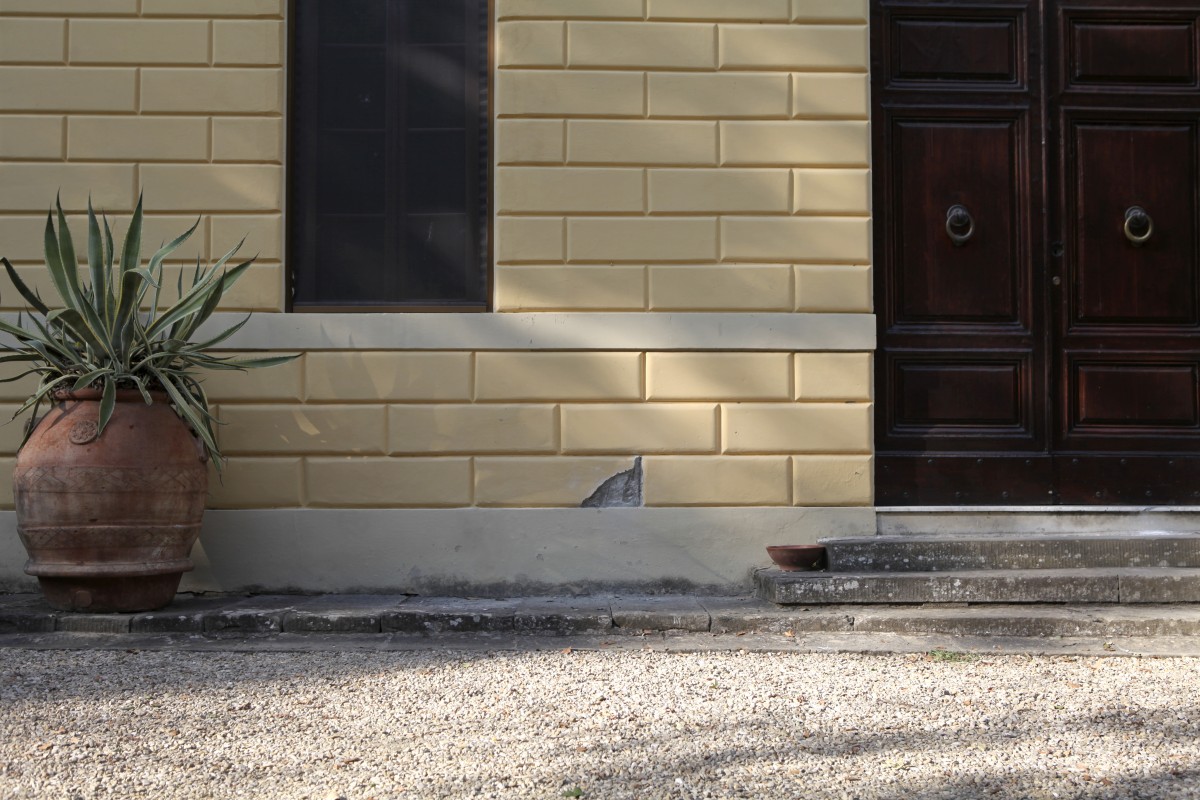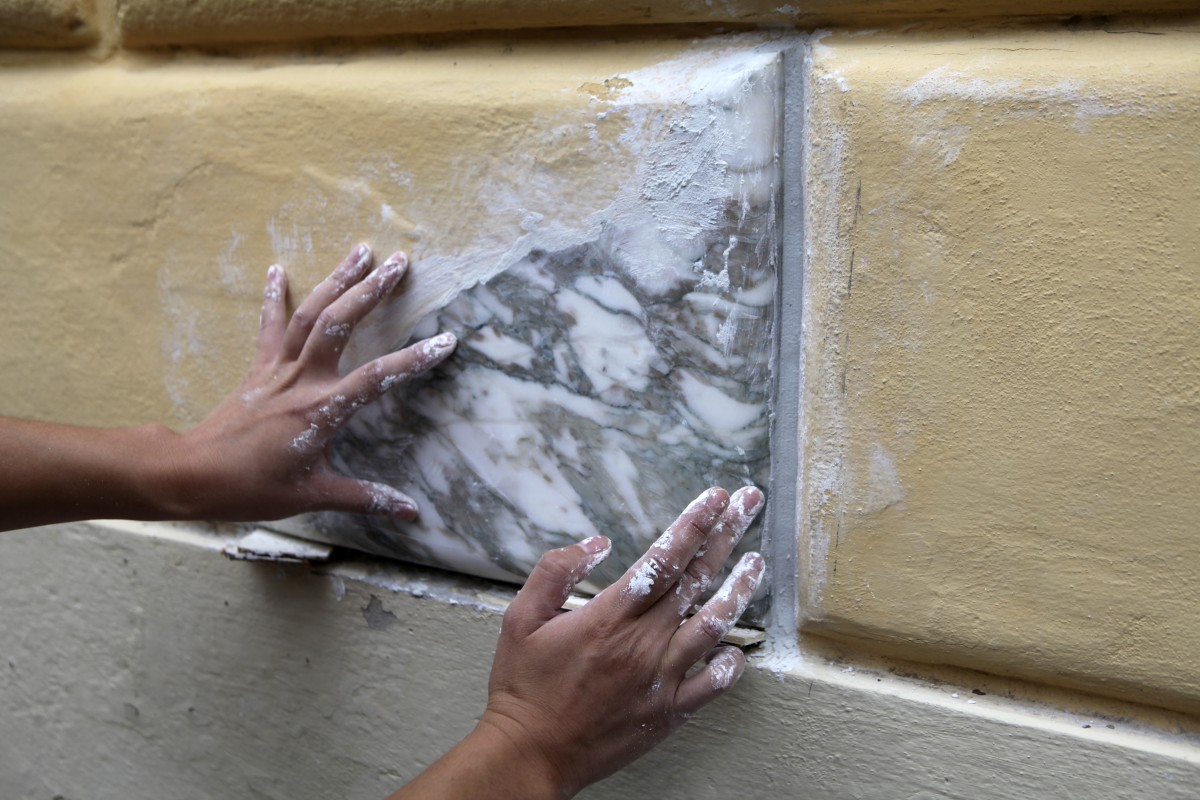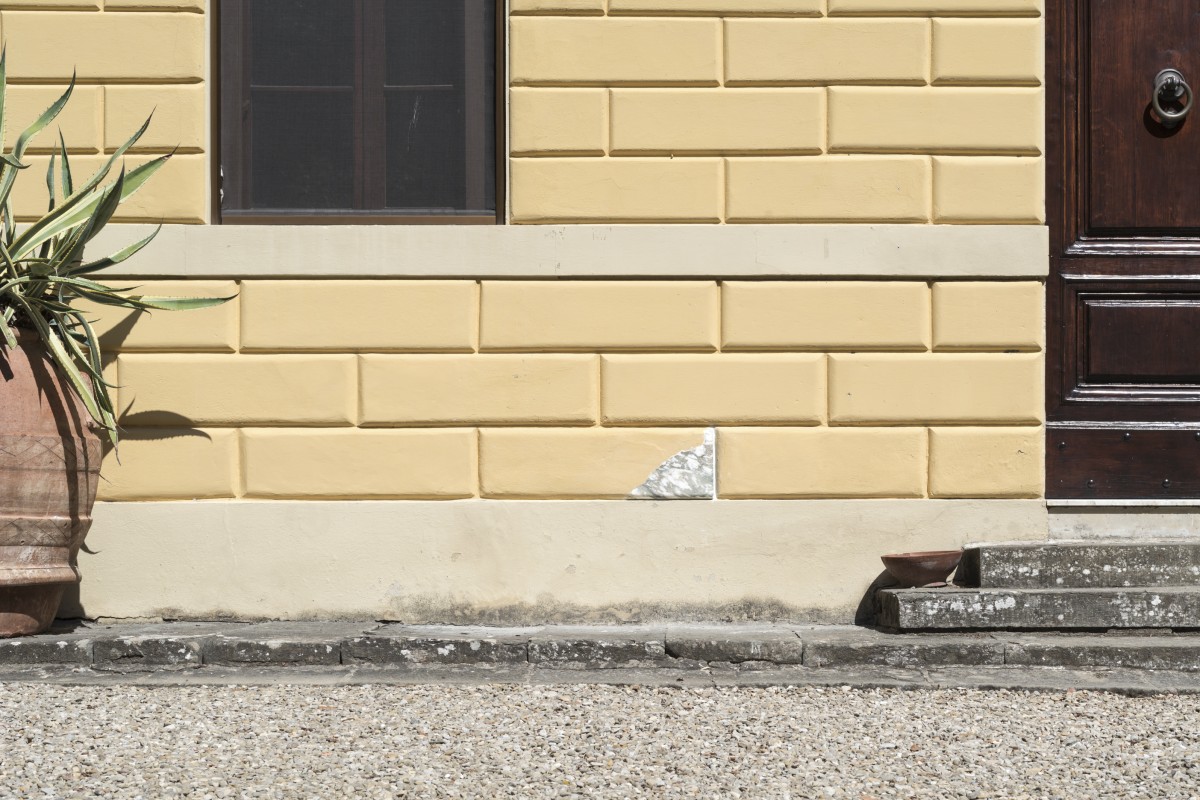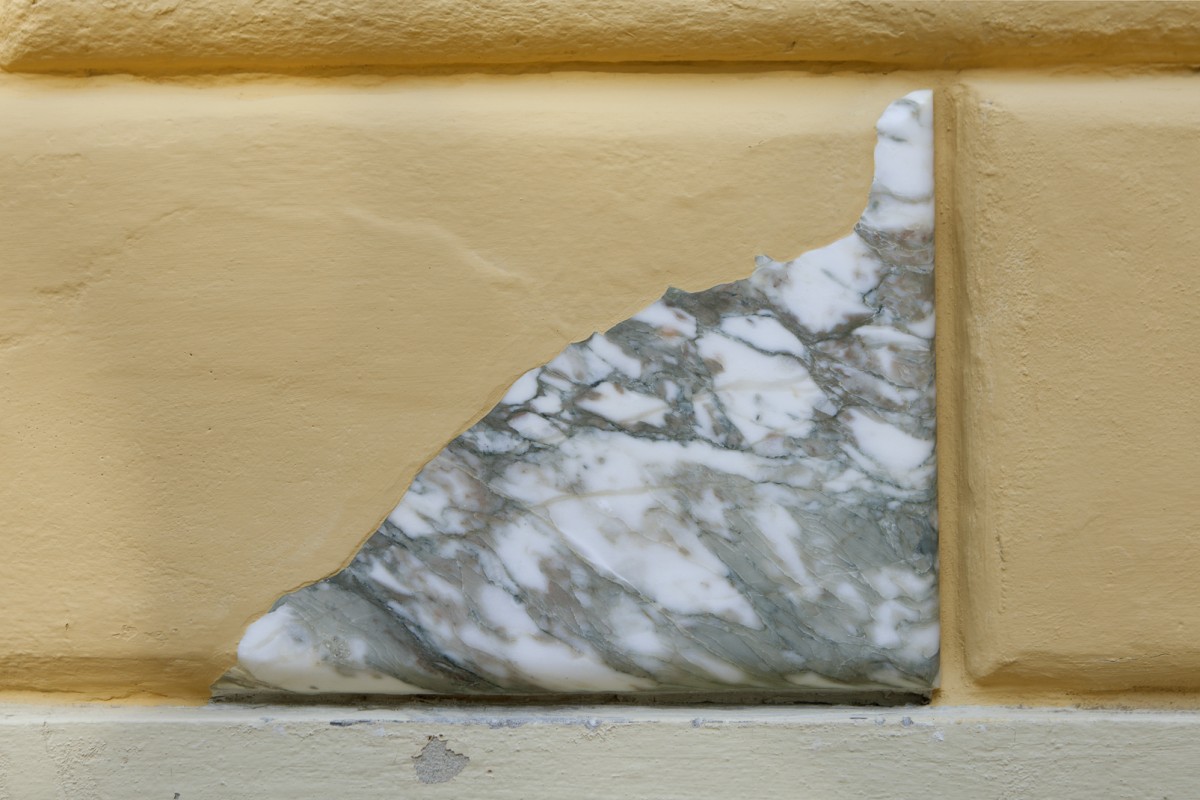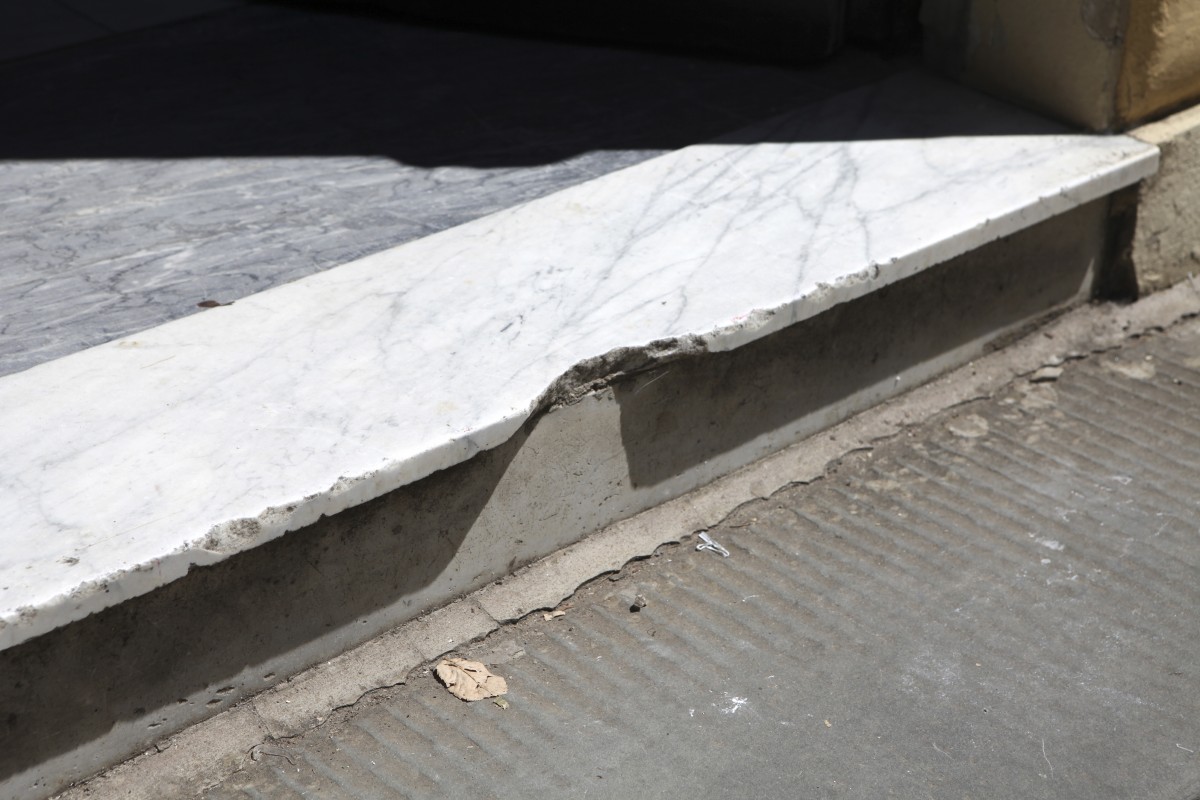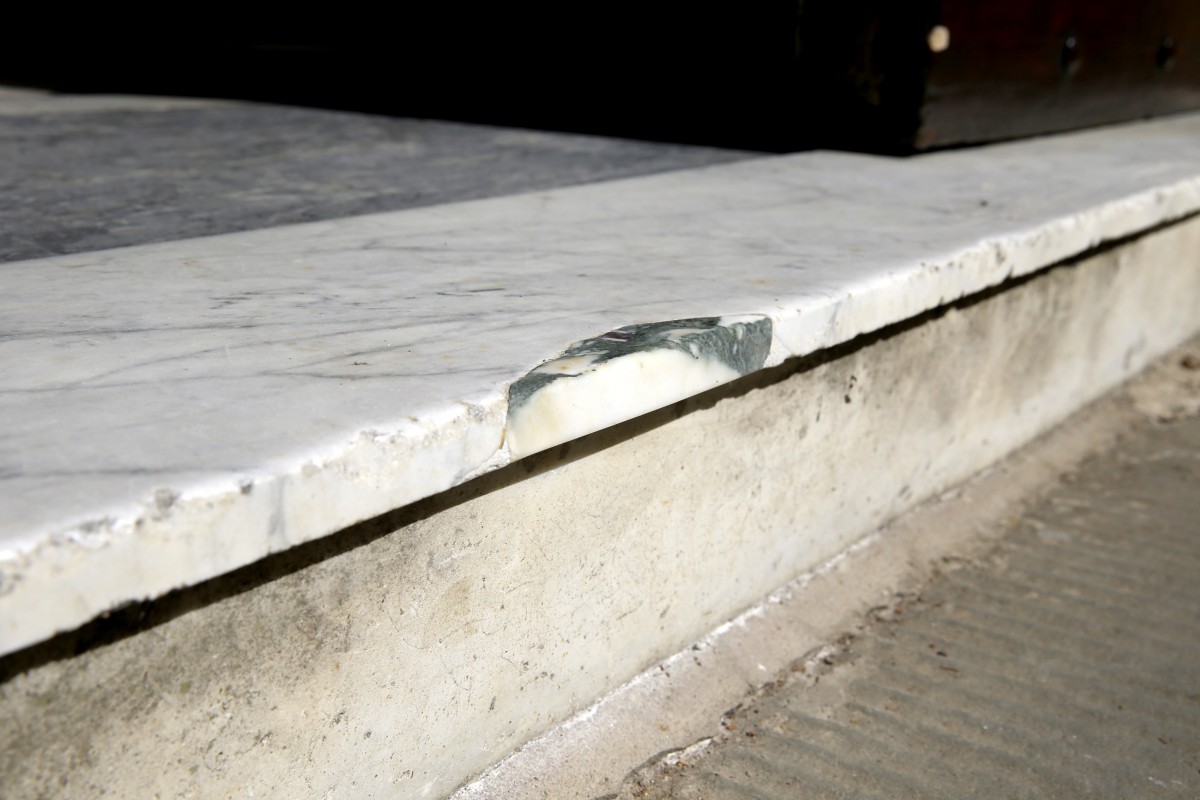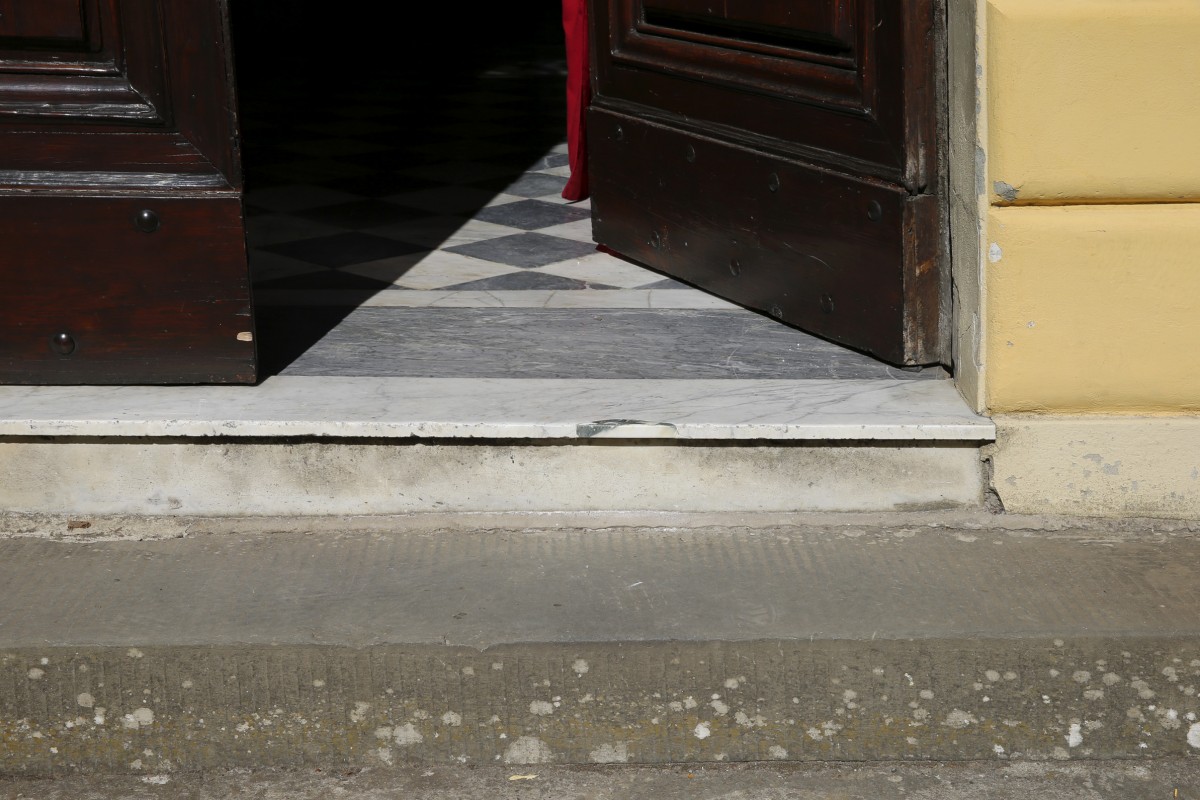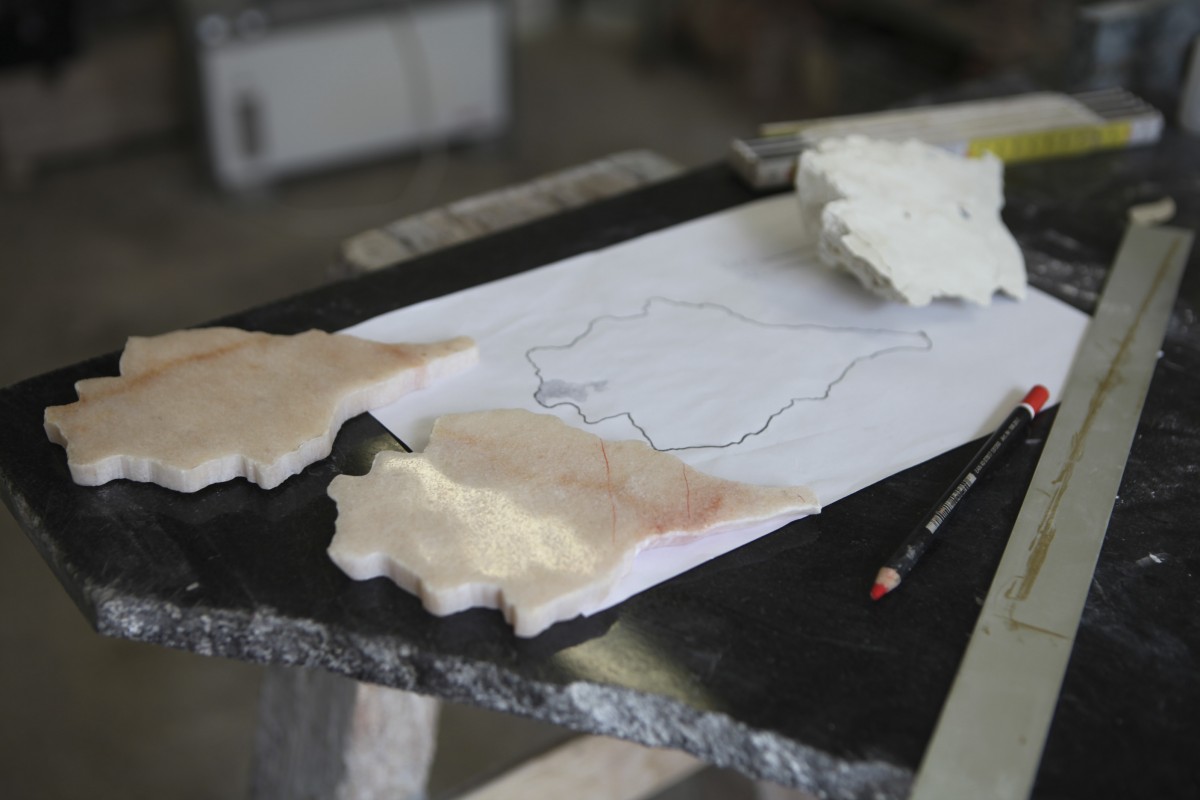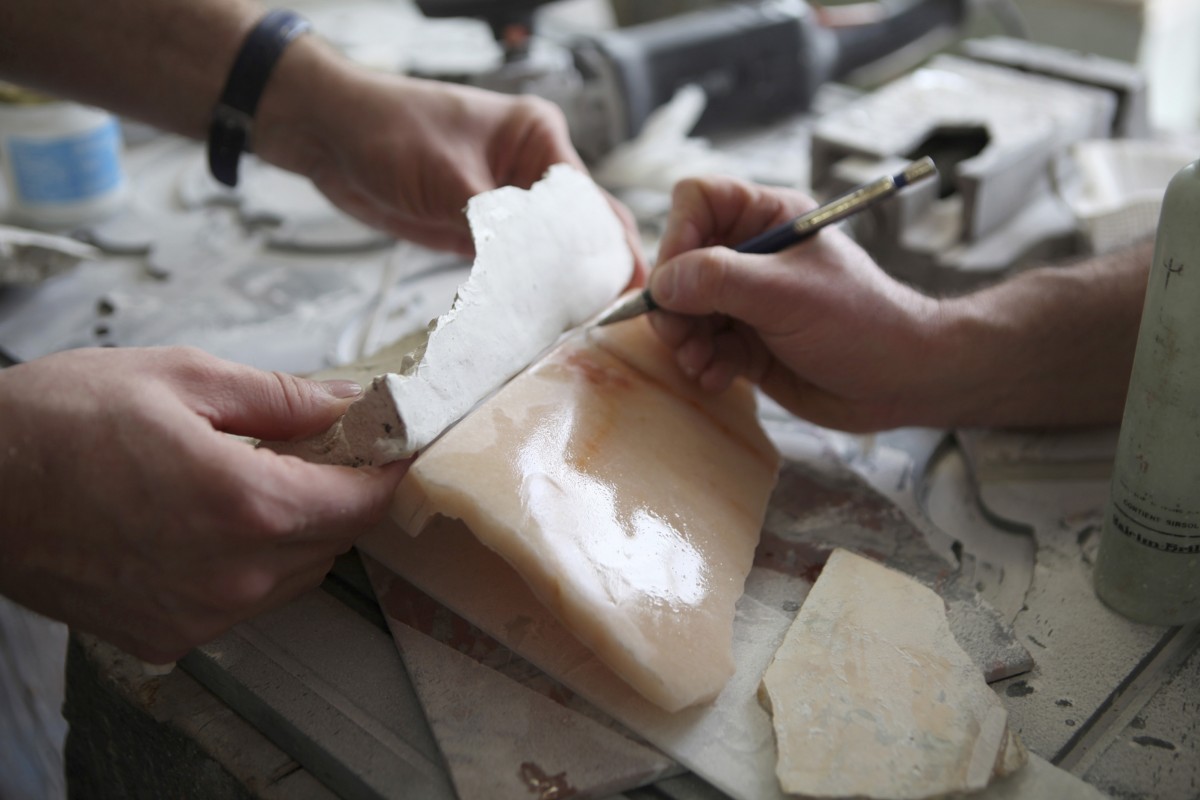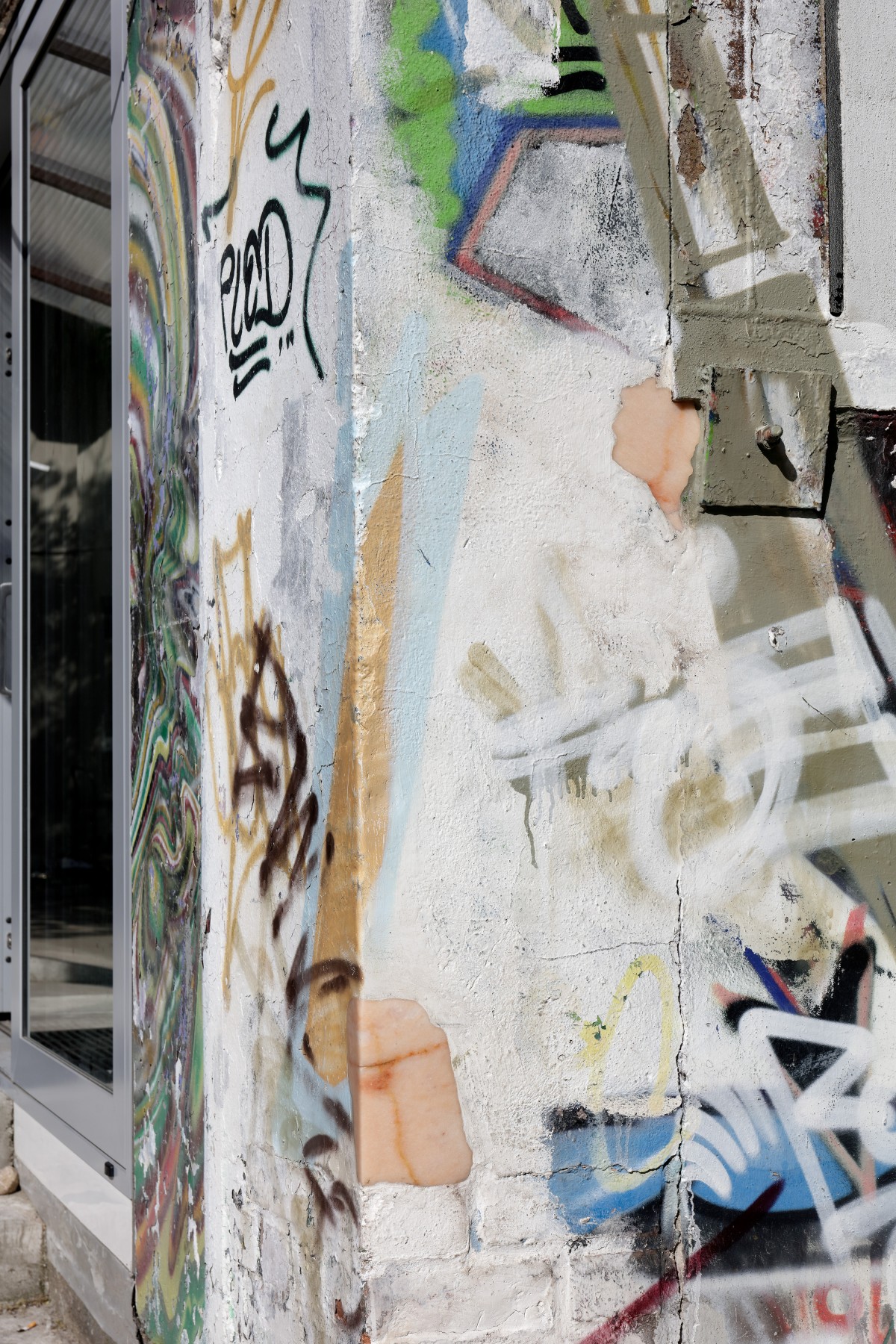EN
Impiantio (ital. for implant) is a serial work which Lee installed site-specifically on various buildings. Lee interferes directly with the given architecture, especially with the facades of buildings by filling in the blanks or replacing ‘missing parts’ with marble that is considered a traditional and valuable material. Herewith, Lee highlights the blankspace and equally refers to its time and story - an intended revaluation.
Lee’s work relates to the traditional culture of restoration, which is the retrieval and recovery of an ancient cultural asset. For this body of work, Lee was inspired by her stay in Florence at the Villa-Romana residency during which she got the chance to observe and study a culture and society that emphasizes and cultivates the preservation and revitalization of the past. In impiantio, Lee questions the value system and the meaning of restauration work.
DE
„Impiantio“ (Impianto, ital. für Implantat) ist eine serielle Arbeit, die Jeewi Lee an verschiedenen Gebäuden ortsspezifisch installiert.
Lee greift direkt in die Architektur, insbesondere Fassaden ein und füllt Leerstellen oder „fehlende Stücke“, die durch Zeit, Verwitterungen und sonstige Einflüsse entstanden sind mit Marmor – ein traditionelles und hochwertiges Material. Damit unterstreicht sie die Leerstelle und verweist gleichermaßen auf sie und damit auf ihre Zeit und Geschichte; eine bewusste Aufwertung.
Die Arbeit nimmt Bezug auf die Restaurationskultur, die Tradition der Wiederherstellung eines alten Zustandes eines Kulturguts. Inspiriert durch ihren Aufenthalt in Florenz während ihrer Villa Romana-Residenz bei der Beobachtung einer Kultur und Gesellschaft, die einen besonderen Wert auf die Erhaltung und „Auffrischung“ von Vergangenheit legt, hinterfragt sie das Wertesystem und die Bedeutung einer Restaurationsarbeit.
